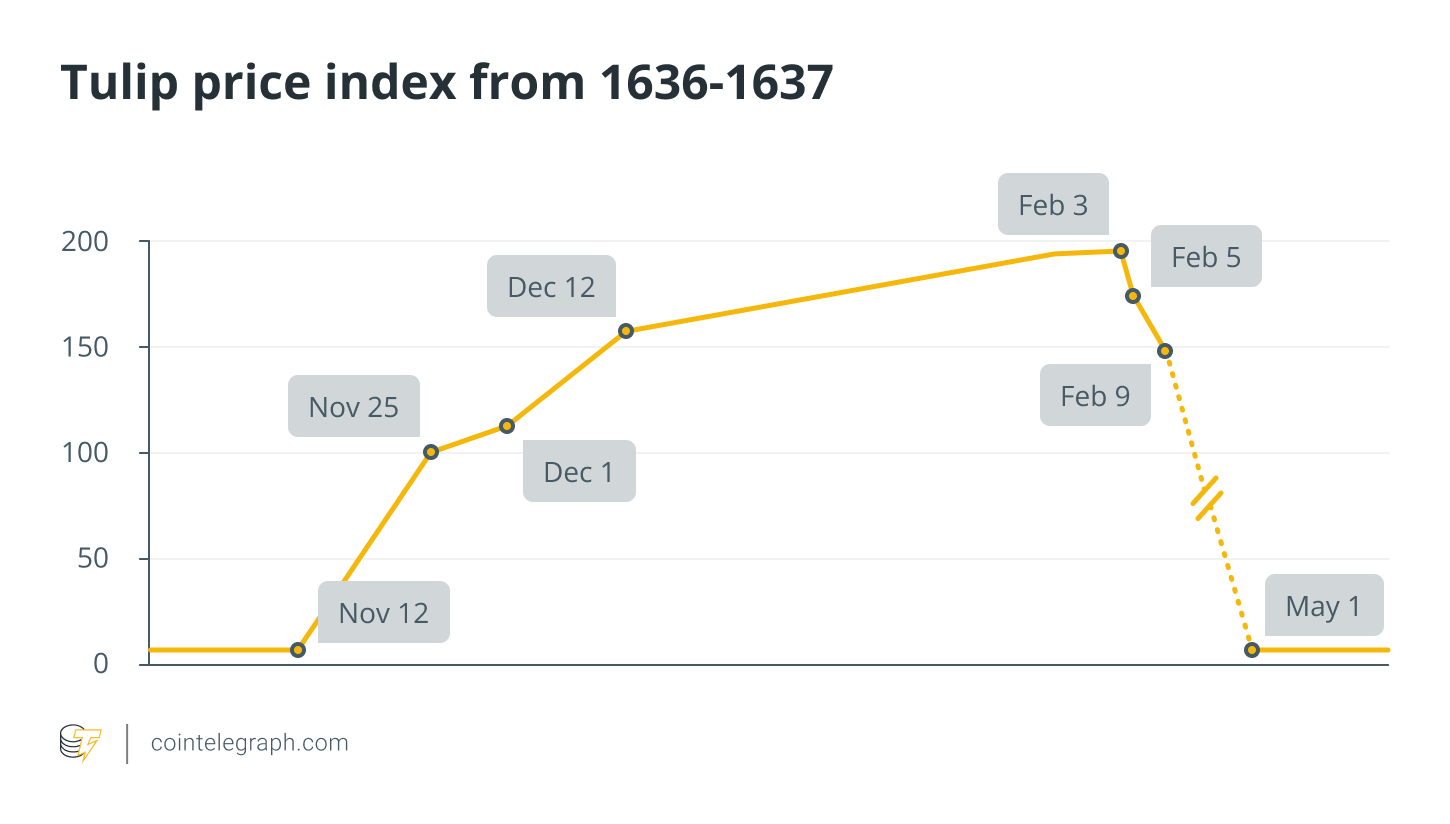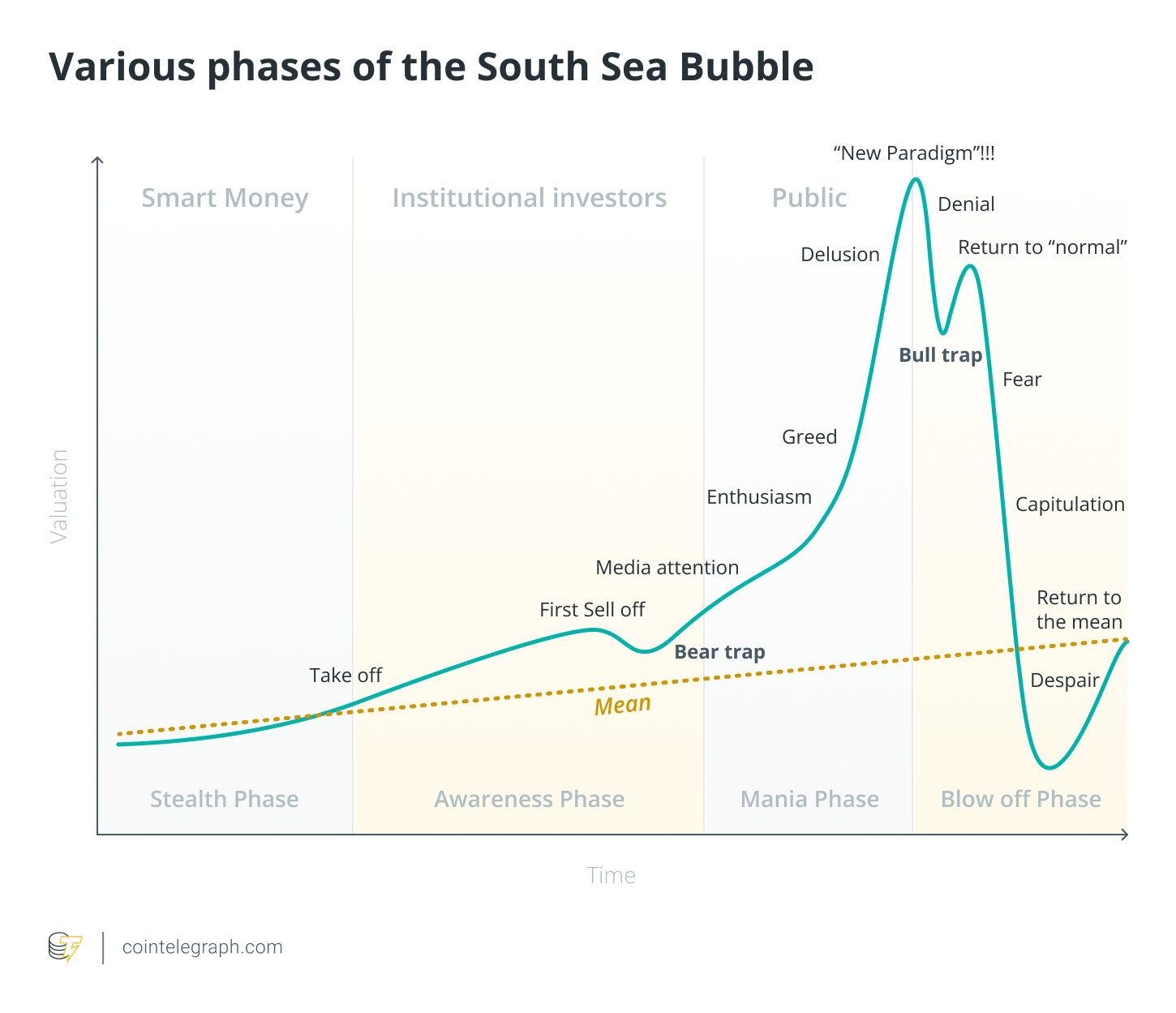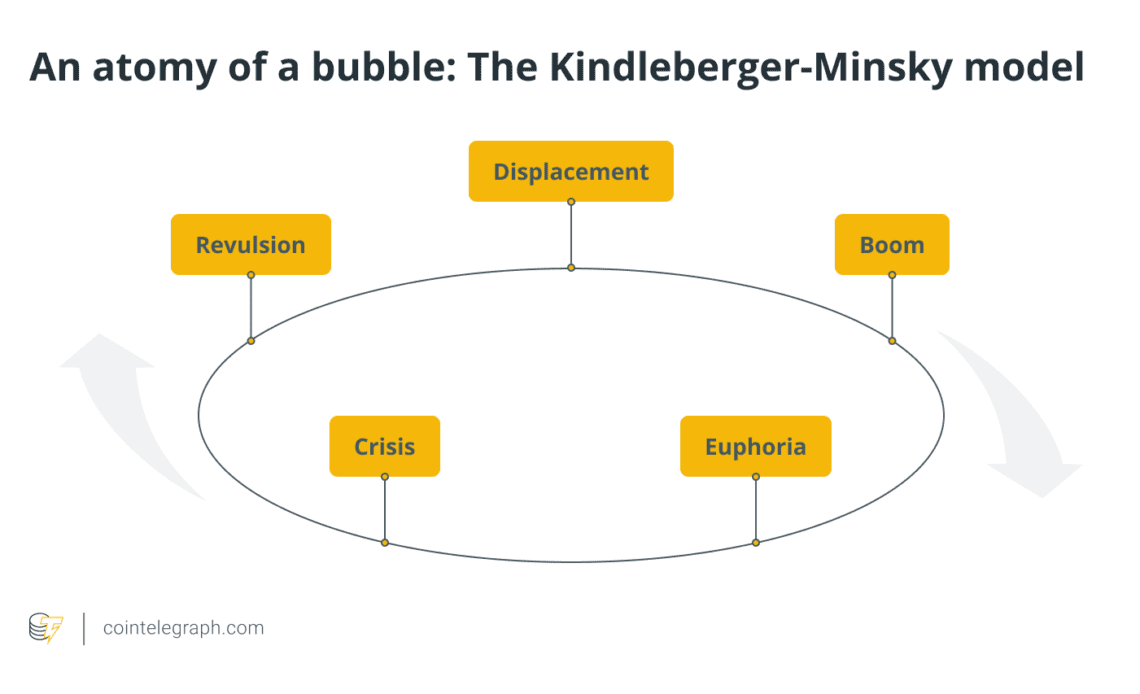An economic bubble is a time of fast economic expansion that is driven by speculative enthusiasm and excessively high asset prices. A bubble is characterized by an increase in demand for an asset, such as commodities, stocks or real estate, which drives up its price. A number of factors, including easy access to credit, low interest rates and investor optimism, frequently combine to create financial bubbles.
The asset’s price rises as more individuals invest in it, luring even more capital. Its price eventually falls below a level that can be sustained, which causes a sell-off and a sharp collapse in value. This causes widespread losses for investors and can have a large negative impact on the overall economy.
Here are five significant economic bubbles in history.
Tulip mania (1634–1637)
A financial bubble called “tulip mania” affected the Netherlands in the early 1600s and was based on the price of tulip bulbs. At the time, tulips were a brand-new, exotic flower that was greatly admired for its beauty in Europe. Tulip prices increased along with the rise in demand, reaching previously unheard-of heights before abruptly plummeting.

Numerous investors, including affluent merchants and aristocrats, lost their fortunes when the tulip bubble burst, leaving them with worthless bulbs. Considered one of the earliest historical economic bubbles, the tulip mania is sometimes cited as a warning about the risks of speculation.
The South Sea bubble (1720)
A speculative bubble known as the South Sea bubble developed in England in the early 1700s and was based on the South Sea Company, which had been given a monopoly on trade with South America. The company’s stock swiftly increased in value, sparking a buying frenzy among speculators.

When the bubble burst in 1720, the value of the company’s stock fell precipitously. Many investors lost all of their money, and this resulted in widespread poverty and unemployment. The South Sea bubble had a big influence on the English economy and is regarded as one of the first financial crises in modern history.
The economic crisis also resulted in a decrease in consumer spending, undermining public confidence in the government and the financial system, leading to a general distrust of speculative investment that lasted for several decades.
Railroad mania (1845–1847)
The railroad craze, commonly referred to as the “railway mania” of the 1840s, was a time when the railway sector in Great Britain experienced significant…
Click Here to Read the Full Original Article at Cointelegraph.com News…
